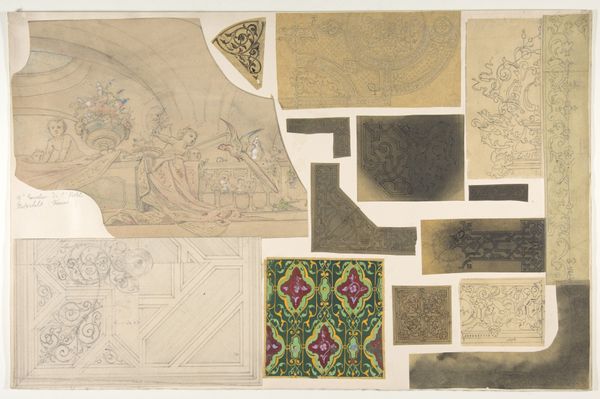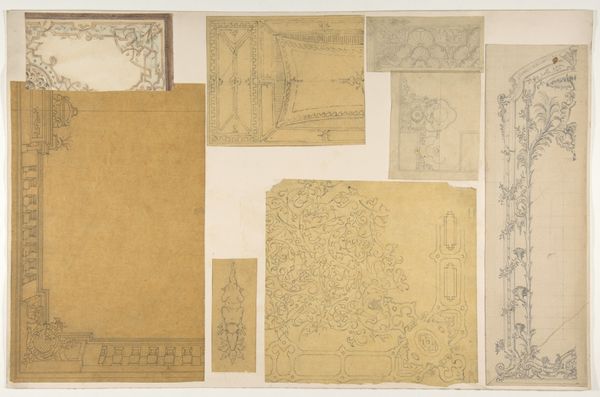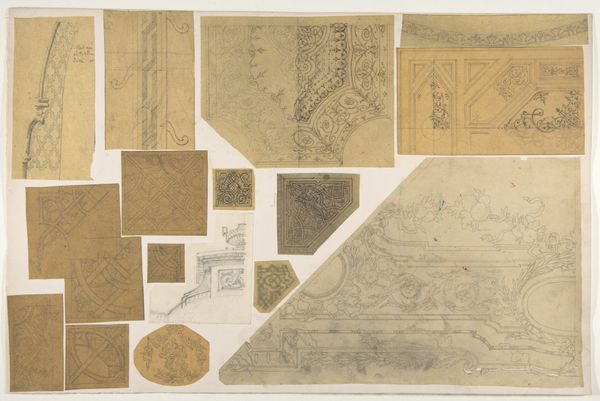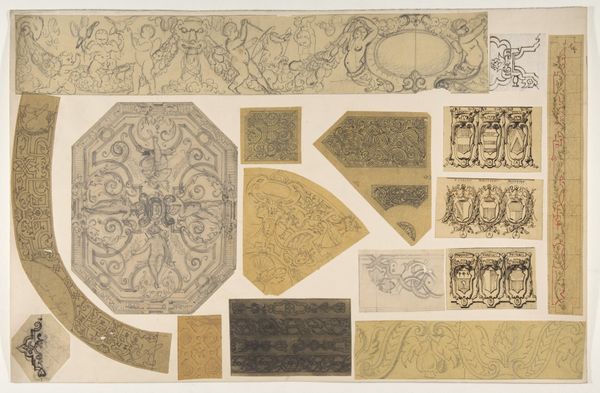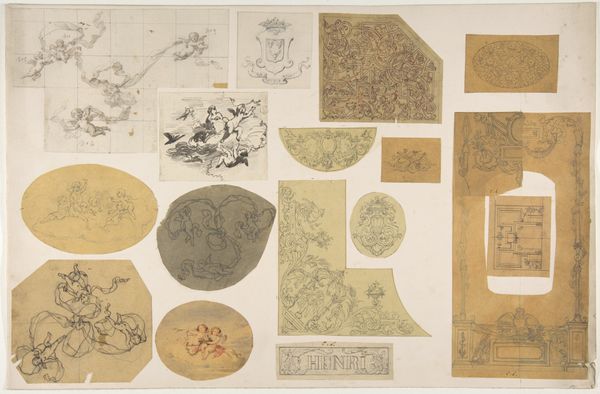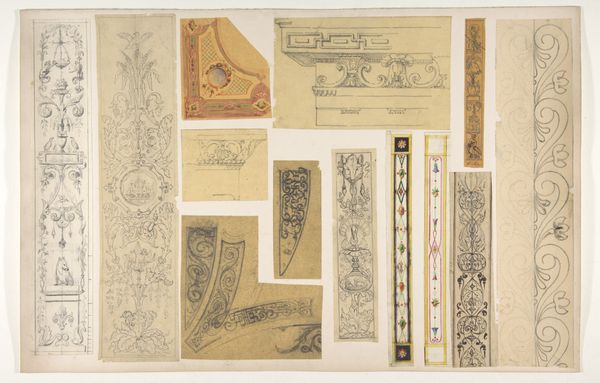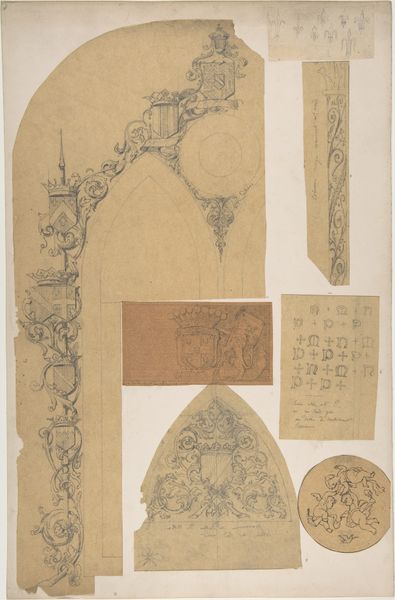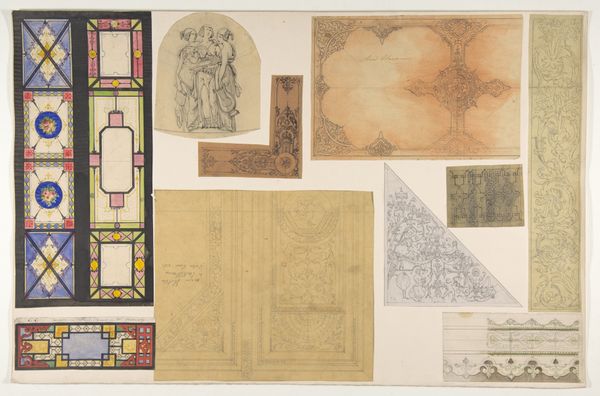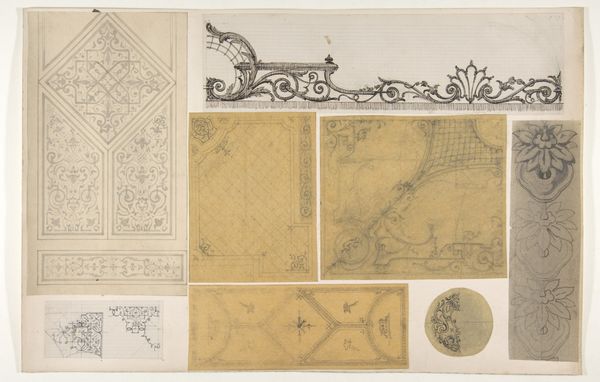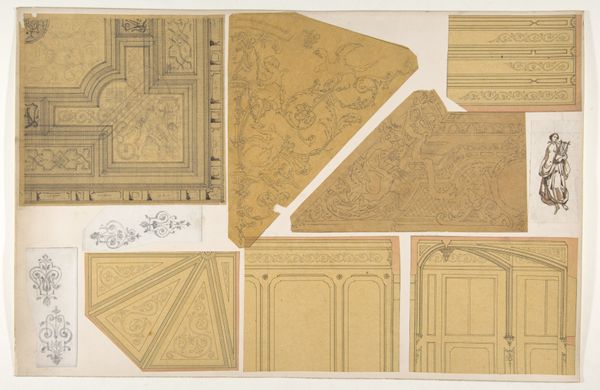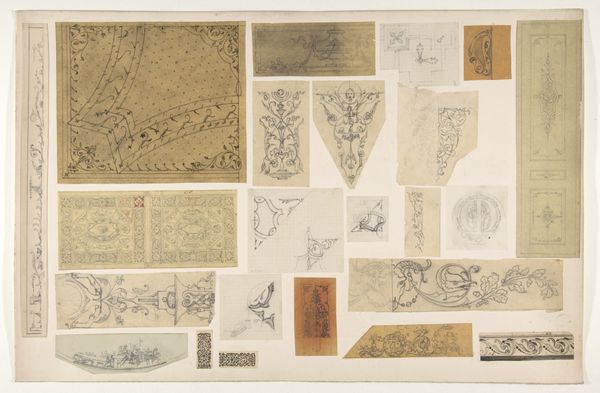
Ten designs for the decoration of houses, including at least one for the stairway of the Chateau d'Ognon of M. deMachy (Oise, France) 1845 - 1900
0:00
0:00
drawing, print, paper, ink, pencil
#
drawing
# print
#
human-figures
#
paper
#
ink
#
pencil
#
history-painting
#
academic-art
Dimensions: sheet: 12 5/16 x 18 13/16 in. (31.3 x 47.8 cm)
Copyright: Public Domain
Curator: These are studies for the decoration of a house –actually, ten designs, some of them possibly intended for the Chateau d'Ognon. They were made between 1845 and 1900 by Jules-Edmond-Charles Lachaise. The sheet combines drawing and print, ink and pencil, all on paper. Editor: It has a slightly disjointed, fragmented feel, as if glimpsing pieces of different puzzles. A few historical figures seem present, so royalty? A king maybe? Curator: Indeed! These were very likely part of interior design plans for an elite patron; probably for M. de Machy of the Chateau d'Ognon, in Oise, France, to evoke power and dynastic continuity. You see traditional motifs like fleur-de-lys alongside allegorical figures… emblems of authority and refined taste, all intertwined with the social expectations of class and status. Editor: The choice to depict royalty makes the art inherently political as there’s power and historical association there. Would we ever see an everyman put up like that on the stairway? No, that art would have been seen as radical. So, to see what he sees is not art imitating life. Instead, it becomes a political reinforcement of power, an artistic choice reflecting the socio-political reality of his patron. Curator: And in an era undergoing significant social shifts, the nostalgic yearning for aristocratic grandeur through architectural design perhaps acted as both affirmation and resistance for this social strata. Consider the rise of Republicanism alongside the longing glances toward eras of more opulent decadence in monarchical control. This tension resonates deeply in such a commission. Editor: Seeing these plans does make you imagine yourself in their place; almost playing along with their beliefs on the divine right of kings or a hierarchy of inherent talent because the work reinforces the idea. I can easily see that becoming its appeal to people that held those views. Curator: Ultimately, Lachaise provides us insight into how the built environment reflects not just taste but complex negotiations between memory, power, and shifting social tides of his day. Editor: Yes, designs that show a silent story being told in who holds, maintains, and can choose who inhabits their stairway.
Comments
No comments
Be the first to comment and join the conversation on the ultimate creative platform.
